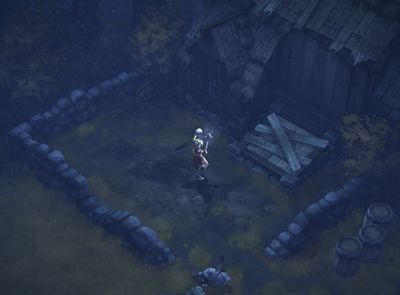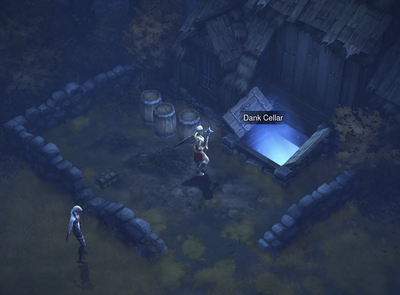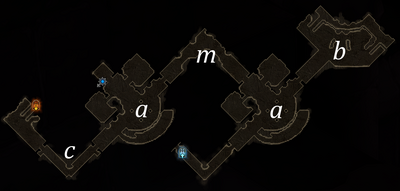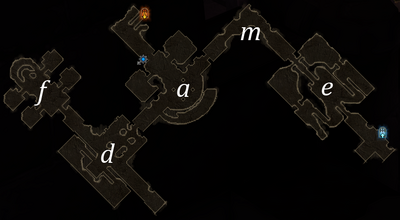Map Generation is one of the defining features of the Diablo series and the most apparent difference to players every time a new game is played. It is the algorithm-based process by which areas of the game are created "on the fly". Map Generation can have a profound impact on game play experience because it provides a basis for the other important aspects such as monster generation, loot, object placement, and even quests.
Diablo III
Map Generation in Diablo III has several different forms. Some areas, such as New Tristram, will always have the same layout and are not subject to randomization. Other areas, such as The Weeping Hollow, have fixed borders but are composed of several tiles that can be picked and arranged differently. Finally, some areas are compiled by stringing together tiles along doorways and bridges. There is a usually a set of rules that control the final size and shape of the area if it's variable.
In addition to the layout, the game also populates the area with monsters and objects. Usually there is a limited pool of potential monsters that can appear in a given area along with a limited number of appropriate containers and breakable objects.
 Dank Cellar closed in one game. |
 Dank Cellar open with object placement randomized in another game. |
 Cathedral Level 2 with each section labeled. (m for Meteor) |
 Cathedral Level 2 in another game with shared tiles. |
 Cathedral Level 2 in yet another game with shared tiles. |

